Maple Hardwood Flooring Resists Scratches and Dents

Maple hardwood features a mix of pale tones — creamy white to light reddish brown — and it’s known for being able to handle abuse, which is why many basketball courts and gymnasiums have maple hardwood floors. Maple also has a subtle, uniform grain, so lane markings on sport floors stand out well against the light-colored wood.
Maple is not a porous wood, so it’s difficult to stain. It looks best preserved with sealant only. It’s a great choice for living rooms, bedrooms, and hallways because it can withstand heavy traffic, but maple is extremely sensitive to moisture and therefore is not well suited to bathrooms.
Maple naturally expands and contracts, depending on humidity levels, and the Maple Flooring Manufacturers Association recommends that inside spaces with maple floors should maintain year-round humidity levels of 35 and 50 percent.
Here are some things you should know about Maple flooring:
Name: Maple trees are members of the Acer species, and the term “Hard Maple” refers to the trees most commonly used in flooring — Sugar Maple (Acer saccharum), the most popular choice for maple floors, and the Black Maple (Acer nigrum).
Origins: Upper Midwest, Great Lakes region, New England and Canada.
Janka Hardness Rating: With a Janka Hardness rating of 1450 out of 4000, the Sugar Maple wood species falls within the medium range of hardwood flooring options. The Janka Hardness scale is used to determine a hardwood’s resistance to dents, dings, and scratches. The test, which uses a 2” x 2” x 6” piece of a wood specimen and a steel ball, determines how many pounds per square inch of force will make the steel ball embed halfway into the wood. That outcome of that test is used to rate the wood’s Janka Hardness rating.
Woods at the low end of the scale will show more evidence of dings compared to those at the top. However, woods at the very top of the Janka Hardness Scale could be too difficult to cut for home applications. Also, note that other species of Maple may be softer and not ideal for floors.
Installation: Because maple is so dense, it is difficult to cut without carbide tools and has been known to ruin non-carbide circular saw blades. Once boards have been cut, maple’s uniform texture allows for easy installation, and after sanding and applying urethane clear coat, the warm tones of the wood emit a soft glow.



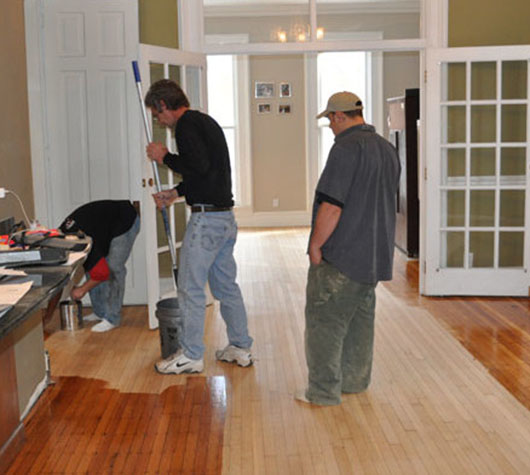 Repairing Scratched Hardwood Floors
Repairing Scratched Hardwood Floors
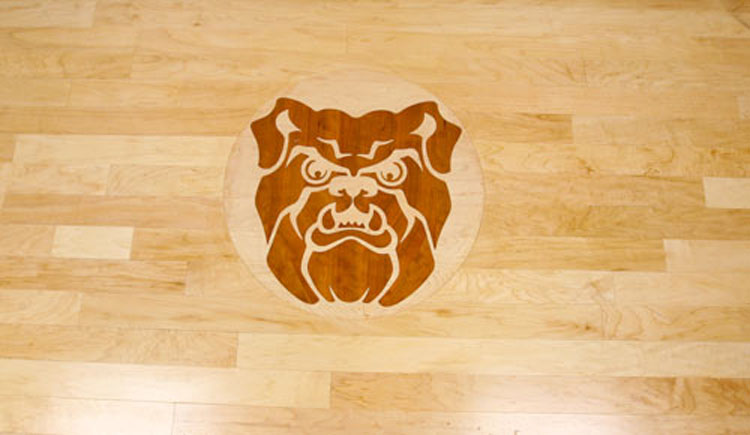 Hinkle Fieldhouse Butler Univers...
Hinkle Fieldhouse Butler Univers...
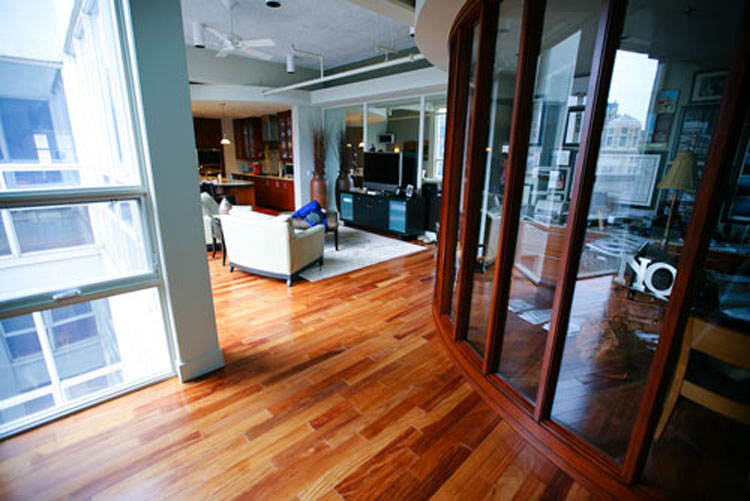 Penthouse Town Home Downtown Ind...
Penthouse Town Home Downtown Ind...
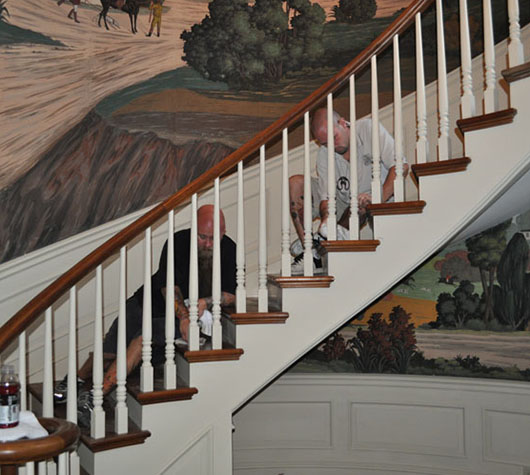 Antique Flooring Restoration
Antique Flooring Restoration
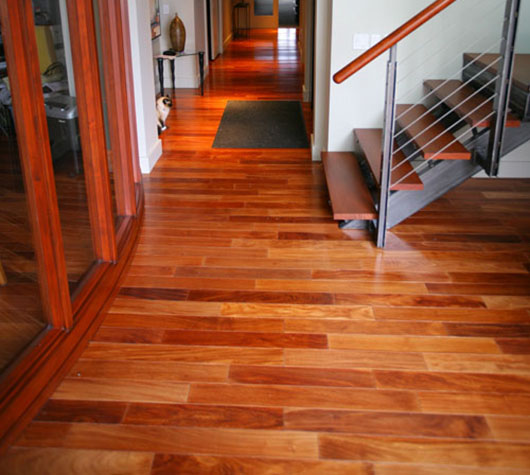 Brazilian Cherry Hardwood Floors
Brazilian Cherry Hardwood Floors







